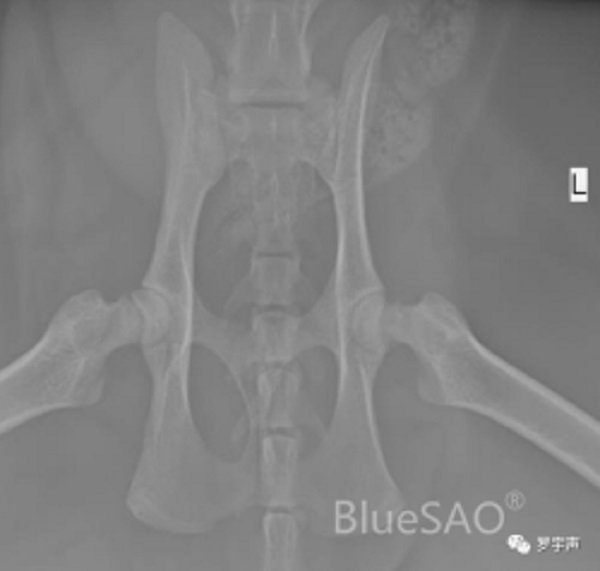Spontaneous femoral head epiphyseal fracture in a cat - BlueSAO total hip replacement surgery
Breed: Maine cat, Sex: Male, Weight: 7.8kg, Age:2 years and 3 months old.
This is a very beautiful and very majestic male Maine Coon. The other Maine Coon cat in the family had had a total hip replacement due to a spontaneous femoral headepiphysis fracture. So the owner is very concerned about hip-related problems in cats. This cat's hip joint was regularly examined when he was young. But unfortunately, it also had this disease. The pet owner came from out of town to see me for a total hip replacement. Another Maine Coon cat that came with her also had total hip replacement surgery due to hip dysplasia.
The femoral head and femoral neck in cats are susceptible to two relatively similar and common diseases - spontaneous femoral epiphyseal fractures and femoral neck epiphyseal osteopathy. Considering the similarities between the two, it is possible that the two diseases reflect different stages of the same chronic disease. The spontaneous separation of the proximal femoral growth plate observed in some cats is not caused by trauma. This condition is known as feline femoral epiphyseal growth plate dysplasia syndrome and is more commonly associated with slipped femoral epiphysis or spontaneous femoral epiphyseal growth plate fractures. The majority of affected cats are castrated males. They usually develop clinical signs such as hind limb lameness, weakness or inability to jump between 1 and 2 years of age. The disease may occur unilaterally in the hind limbs or bilaterally. Cats with bilateral onset will show significant abnormalities when walking or jumping, and muscle atrophy will occur. Overweight cats are at higher risk for spontaneous femoral epiphyseal fractures. In one study, a higher risk of growth plate dysplasia was shown in Siamese cats. Diagnosis is usually made with the help of imaging. Possible imaging findings are epiphyseal growth plate discordance, femoral epiphyseal displacement, femoral neck resorption, osteolysis, and osteosclerosis.
The etiology of this disease is unknown. At the histopathologic level, the growth plate contains irregular clusters of chondrocytes rather than the normal columnar arrangement of cells, and the growth plate also contains abundant cartilage matrix. These changes may be consistent with delayed closure of the growth plate or may reflect dysplasia of the growth plate. The bones of the epiphysis and femoral neck are active. The proximal femoral growth plate in unneutered cats closes between their 30th and 40th week of age, but neutering before this age significantly delays growth plate closure. Delayed growth plate closure can make castrated male cats more susceptible to spontaneous epiphyseal growth plate fractures. This is a result of prolonged weight bearing on the growth plate. Obesity may also cause the growth plate to be overloaded with weight, which may promote the development of the disease. Over time, the epiphysis develops osteolysis and osteosclerosis, creating a pseudarthrosis. For such a disease, total hip replacement surgery is the best treatment option or choice.
We first used the iBlueVet orthopedic planning software to give this Maine Coon cat a precise preoperative planning. He was then given a new artificial joint using the BlueSAO Small Canine CatBone Cement Hip Replacement System.
The planned implants were a #3 femoral stem and 14mm acetabular cup. (The (+0) 8mm, (+2) 8mm and (+4) 8mm femoral heads were spare.
Four preoperative x-rays of the pelvis in orthogonal, lateral, orthogonal and lateral femoral views were taken.

Orthopedic Instruments We Use BlueSAO